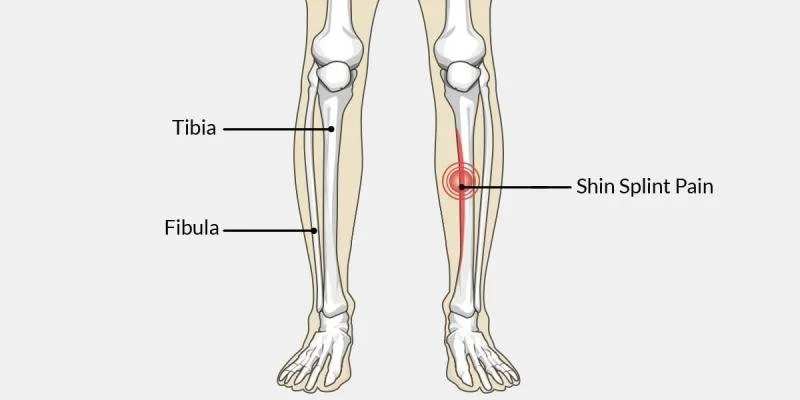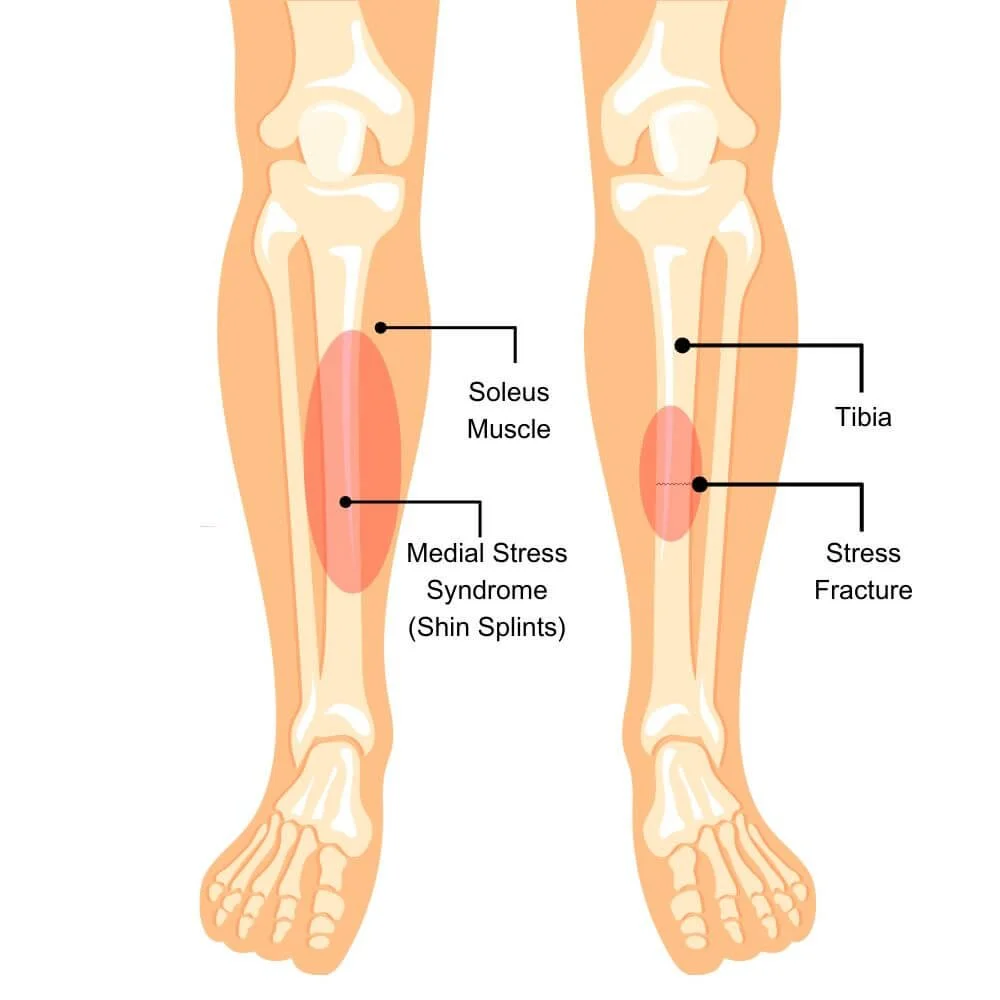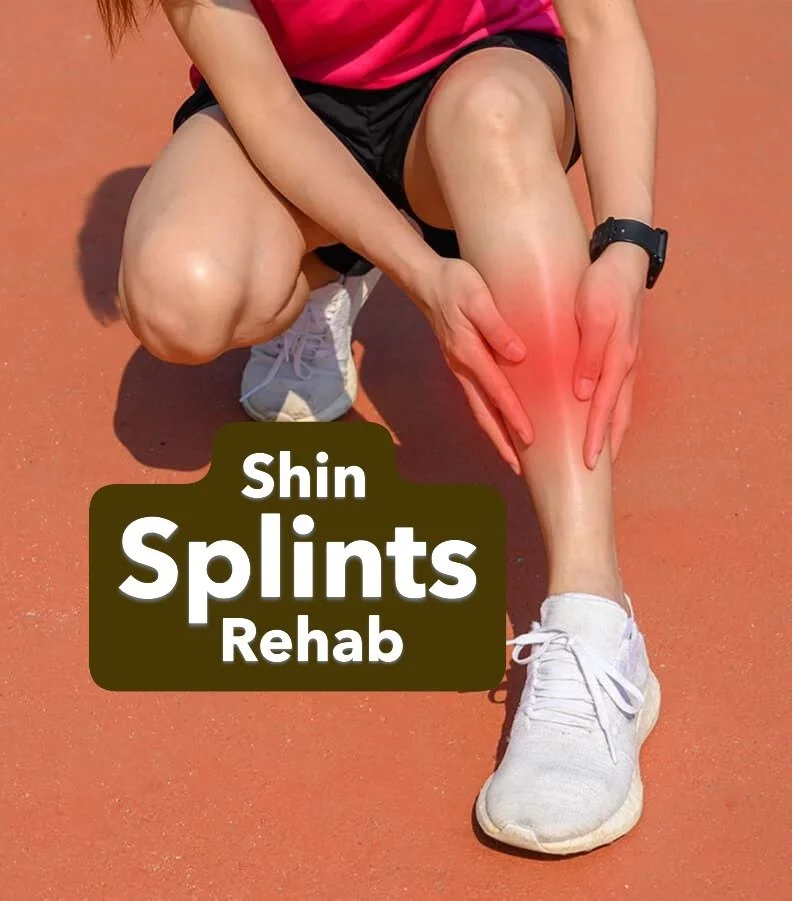"Shin Pain While Running? How to Tell If It’s Shin Splints"
Shin Splints is officially known as Medial Tibial Stress Syndrome (MTSS)
MTSS, is a widespread overuse injury that causes exercise-induced pain along the inner (posteromedial) side of the shin. It is especially common among runners, jumpers, and military recruits, accounting for up to 35% of all exercise-related leg pain. It affects around 11% of male and 17% of female recreational runners. Recovery time is long—4 to 18 months—with a high recurrence rate, making prevention and effective rehab critical.
Shin Splints Pain Location on left tibia.
Symptoms & Diagnosis
Pain appears during or after activity and improves with rest — though it may worsen the next morning.
Pain is diffuse and spread over a broad area (≥5 cm) on the inner shin.
Pain may radiate to the foot, and in severe cases, occur at rest.
Could it be something else?
Other conditions like tendonitis, nerve entrapment, or compartment syndrome can cause pain in the same area, but the main condition that can be mistaken for MTSS is a stress fracture. Although the areas of pain can sometimes overlap, the main indication that you have a stress fracture is a smaller more focused area of pain around 2–3 cm in size instead of 5cm seen with MTSS. The pain tends to be sharper and less diffuse than MTSS pain.
A stress fracture is more serious than shin splints because it involves a small crack in the bone, requires longer rest, and carries a higher risk of complications if not properly treated.
Difference between shin splints pain and stress fracture pain.
What Causes MTSS?
The exact cause of MTSS isn’t fully understood, but two main theories dominate:
Periosteal Traction Theory
Repeated pulling from nearby muscles — especially the tibialis posterior and soleus — causes inflammation of the periosteum, the tissue lining the shin bone. This is supported by scans showing increased bone activity along the inner shin in people with MTSS.Bone Overload Theory
MTSS may be a form of bone stress injury, where the tibia is overloaded from repetitive impact.Studies show temporary reductions in tibial bone density in affected areas.
In some cases, tiny microcracks in the bone were found without proper healing, suggesting a compromised bone repair response.
Because the mechanism is still debated — and not always visible on scans — MTSS is often managed based on symptoms, not a single diagnostic test.
Risk Factors for MTSS
Research has shown that certain factors are associated with developing MTSS. Most can be changed, so are useful to know about when it comes to prevention and rehabilitation.
1. Excessive foot pronation
2. Reduced lower-leg muscle mass or strength.
3. Imbalances in muscles in the lower leg and foot that help control movement, namely ; Plantar flexors, invertors and evertors and Flexor hallucis longus.
4. Muscle fatigue and poor shock absorption.
Treatment Approaches
Like most sports injuries, there’s no universally agreed rehab protocol for treating MTSS, but most protocols include initial symptom alleviation with things like rest and applying ice. I’ve talked about using ice before here, where I cover the fact that although applying ice can reduce pain, repeated use of it can impair tissue healing. The same is also true of taking NSAIDS like ibuprofen. For this reason, I recommend minimizing both ice and NSAID use and using paracetamol instead if you need pain relief. For those that simply can’t rest (athletes!) switching to other types of lower-impact activity like cycling or swimming can take the pressure off the shins.
To properly treat MTSS and reduce the chances of it coming back again, you will need to address the underlying biomechanical causes. Foot and lower-leg exercises are now central to MTSS rehab programs, focusing on the stretching and strengthening of muscles both in the foot and calf. One study also found that adding arch-support orthotics helped reduce pain and speed recovery.
If you are interested in seeing a detailed rehabilitation protocol for shin splints (MTSS) based on recent research, then click here or on the image below.
Osteopathy Can Help
Osteopathic treatment can complement your shin splints recovery by addressing not only the symptoms but also the underlying biomechanical imbalances contributing to the injury. Through hands-on techniques such as soft tissue massage, joint mobilization, and tailored movement guidance, osteopaths help improve circulation, reduce muscle tension, and restore optimal alignment and function. This holistic approach supports faster healing, enhances mobility, and may reduce the risk of recurrence—making it a valuable addition alongside your exercise and rehab program. If you are a runner in East Grinstead or Forest Row and have a problem with shin splints come and see me at Osteo Studio.
Cliff Russell , Registered Osteopath
The information for this article was drawn from recent scientific papers that can be found here, here and here.



